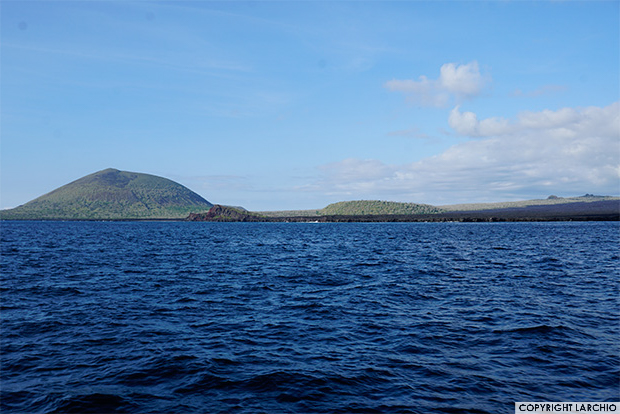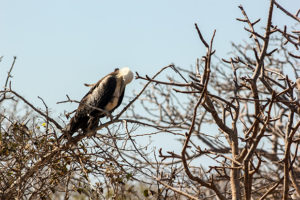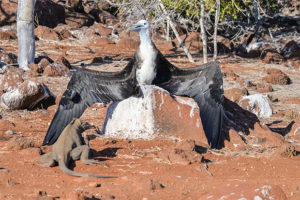What are the best months to visit the Galapagos Islands?
Searching for the most trusted Galapagos tour agent? Take a trip with GalapagosInformation.com. Highly recommended in TripAdvisor. Have fun with the best traveling experience. The top rated service, many options, luxury accommodations, trained guides. All Inclusive vacations, every week of the year. Book right now. What are the best months to visit the Galapagos Islands?.
A trip to the Galapagos Islands certainly is the adventure of a person’s lifetime. Situated 1,000 km from the Ecuadorian mainland, the archipelago contains 13 large islands, five of which are populated. Find out about the legendary Islands by taking a vacation with us!
The Galapagos Islands are blessed with favorable weather conditions throughout the year, so there is not any “best” moment to visit the precious islands. Yet, you might want to take into consideration variables for example peak season vs. low season along with the local climate. Whether the excursion is for you, your team, or your family, have a look at when to check out the Galapagos Islands.
The Galapagos Islands definitely impact you greatly. Travel along with us and have the journey of your lifetime between fun sea lions, albatrosses, reddish colored sally light-foot crabs, and sneaky frigate birds. Make your dream becoming reality and contact us now!
When is a good time to visit the Galapagos?
Galapagos is a destination that could be visited whenever you want. There’s two seasonal changes. The warmest is between December to May when the air is constantly clean and the sun shines strongly. If you love to dive, the optimum time to go to is between June and November given that the temperatures are a bit less hot, will probably have a far better likelihood to see the Galapagos’ legendary marine life.
The Galapagos were discovered by chance in 1535 by Father Tomas Berlanga, priest of Panama.
Because of the long distances involved, the only practical approach to explore the Galapagos is by live-aboard ships, which traveling between islands, largely at night, and also create different stops every day. More than 80 vessels are licensed to operate from the archipelago and there are an infinite number of combinations of stops and routes. Most cruises go ashore two times per day: 10 full days on the ship typically means 20 coast landings, 10-20 snorkels, and many panga rides (pangas are small, open outboard-powered boats) to about 10 different islands.

Exploring on your own is much harder. Getting around separately is tricky and all traffic must be accompanied by a qualified naturalist guide at all landing sites. However four islands (Santa Cruz, San Cristobal, Floreana and Isabela) do have hotels of varying sizes and standards and a few boat operators provide day-trips.
Some cruises leave from Baltra (the pier is a five-minute drive from the air terminal). Others go from Puerto Ayora, the tourist hub on Santa Cruz and a comparatively crowded city, with a bank, ATM machine, taxis, pubs and even a cinema.
GalapagosInformation.com offers an assortment of tailor-made live-aboard tours on a lot of different boats carrying from 4 to 16 passengers.
Wildlife actions diverge, and each month has its highlights. By way of example, green turtles begin their egg-laying in January; penguins interact with swimmers on Bartolome mainly from May until the end of September; humpback whales start to arrive at June; July through the end of September is the ideal period for most seabird action; peak pupping for sea lions is approximately August, while their pups perform aqua-aerobics with snorkelers in November; and December is the month to get hatching giant tortoise eggs. So, always there’s something going on.
The hot, humid, slightly rainy season (with occasional tropical showers) is from December to May (March and April are generally hottest and wettest). The seas are usually calmer and clearer at this time of year (with 60ft-80ft visibility typical) and the water temperature averages 79° F (26°C), so this period is best for snorkeling.
The cool, drier, windier year (with occasional drizzle or mist) is from June to November. Sea temperatures in this time of year fall to as much as 66F (19C) and visibility often goes to 30ft-50ft, whilst sea swells may make some landings catchy.
The Way to Access to the Galapagos Islands</h3
Not sure how to reach the archipelago? It is simple. Your first destination is mainland Ecuador. Whether you’re traveling from the USA, Europe or anywhere else, you should book an international flight to Guayaquil or Ecuador’s capital, Quito. The Galapagos Islands is a world-famous travel destination renowned for being an isolated and pristine archipelago. Their isolation is one of the qualities that make them so special. You might be asking yourself how one arrives to the islands. Charles Darwin moved to the Galapagos Islands on the Beagle, but modern-day explorers arrive by jet. There are no direct international flights to the Galapagos Islands. The sole real daily flights to the Galapagos Islands leave in the cities of Quito and Guayaquil on mainland Ecuador. International travelers must ensure to land in the city in order to start their Galapagos adventure. From both Quito and Guayaquil, there are daily flights connecting Ecuador with cities around the Americas and in Europe. Direct flights from the US cities of Miami, Houston, Atlanta, and New York arrive every day. From Europe you will find direct flights coming in both Amsterdam and Madrid. Once on mainland Ecuador, travelers continue to one of 2 airports in the Galapagos Islands. The busiest airport in the Galapagos is on Baltra Island. The second airport is around San Cristobal Island. Flights from Quito and Guayaquil fly there every day bringing passengers to the enchanting islands. From the airports at the Galapagos, passengers move for their cruises or resorts in the port towns of the islands. When booking a cruise in the Galapagos, then it’s highly advised to reserve your flights along with the cruise. This guarantees an on-time arrival and averts the chance of missing the cruise death. Our specialist trip advisors are able to help you arrange every detail of your trip to the Galapagos Islands. Get in contact with them today to reserve your cruise and flights from Quito or Guayaquil. The trip from Quito the Galapagos is about 2.5 hours, and it takes a bit less time out of Guayaquil. As soon as you get to the mainland, you are only a few hours away from seeing the blue-footed boobies and tortoises and swimming with sea lions. Come into the Galapagos, and discover a world unlike any other!
Galapagos Islands Birds
Bird life in the Galapagos is a lot more copious and varied simply due to the fact that it had been considerably easier for birds to reach the islands compared to mammals or reptiles. For a reptile or mammal to reach Galapagos, it had to survive for weeks or months traveling by sea, clinging to a floating shrub or mass of plant. Once it landed, it had to beat the odds and somehow locate food along with an ecological niche where it might luckily resist. Birds, however, could fly to and from Galapagos effortlessly. Even smaller species like finches may be carried out to Galapagos by powerful storms. Nowadays, it’s generally these smaller Galapagos species which have accommodated to eventually become endemic. Like most animals, birds’ cyclical lives, they mate, nest and migrate at particular time of year. Here’s your guide to be sure you are able to see your favorite Galapagos animal species on your next trip!
GALAPAGOS CRUISES 2024
NEMO 2
| DEPARTURES | ITINERARY | AVAILABLE CABINS | SPACES | |
|---|---|---|---|---|
| There aren't available dates for the selected dates |
















